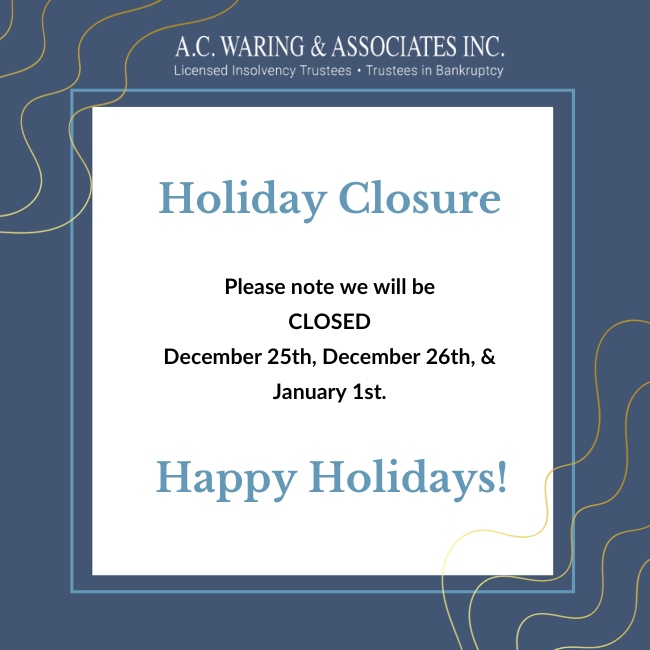Credit cards are among the most common reasons so many Canadians struggle with debt. In fact, 88% of debtors had a median credit card balance of $13,827 in 2019. When you couple credit card debt with mortgages, car payments, and student loans, it’s not difficult to imagine your finances taking a tailspin if you’re not careful.
The good news is that you aren’t alone. Virtually every Canadian is managing debt in one form or another, but credit card debt is one of the most common, and it’s one of the most expensive to pay off.
There are strategies to help you manage mounting debt.
Why Would You Have Multiple Credit Cards?
It’s not uncommon for people to have 1 or more credit cards. Some people prefer to use certain credit cards for certain types of purchases (like business expenses or emergencies), or they may use a particular credit card depending on certain benefits the card may offer (like cash back or air miles).
However, it is your responsibility to manage these credit cards by paying them off, in full, monthly and using minimal payments sparingly. It is also important to know how the balances on your credit cards can affect your finances.
Different cards can have different interest rates, limits, and minimum payments and you have to know these and manage your cards accordingly.
Know Your Interest Rates
If you are not paying off your monthly credit card debt in full then pay attention to your credit card interest rate, or annual percentage rate (APR). Different cards have different rates, and these can quickly mount on more debt, especially if you have multiple credit cards.
Knowing the interest rates on your credit cards can also help you determine which cards you want to prioritize when you’re paying off debt. Some credit card companies may offer promotions with low interest rates for the first year or so, sometimes as low as 4% or 5%, but these rates can quickly soar to 19% or 20% once the promotion ends.
If you fail to pay at least a minimum monthly payment on your credit card, your interest rates could climb even higher than 20%.
Set Up a Payment Strategy
Once you determine how much interest your credit cards are generating, it’s time to prioritize certain cards based on how much you owe and their respective interest rates.
There are a few different ways you can prioritize your credit cards, with the most common being the snowball and avalanche methods. You can even set up automatic payments to help keep you on track and reduce the risk of missing a payment.
Snowball Method
The snowball method focuses on paying off the smallest balance first before moving on to larger and larger debts.
The idea here is that taking care of a small debt first can help motivate you to pay off the next debt. As your debts decrease, your ability to pay larger debts grows.
Avalanche Method
The avalanche method focuses on paying off the largest debt with the highest interest rate, then paying the next largest and so on.
The avalanche method is more focused on paying off credit cards with high interest rates, as high interest rates cost you more money whenever you use that credit card.
Managing Multiple Credit Cards
If paying off your credit cards is too difficult, you could look for strategies to consolidate your credit card balances into a single debt to make things a little more manageable. In some cases, debt consolidation loans could offer lower interest rates compared to your credit card provider.. Unfortunately, a number of borrowers run their debt load back up after availing themselves of consolidation loans.
There are several different ways you can consolidate your credit card debt, but the general idea is that you use a loan to pay off all of your credit cards. You’ll then pay off the loan over a period of time determined by you and your lender. Remember, consolidation loans are still loans. This means continued debt that you must pay back accordingly. This can become overwhelming.
Credit Card Balance Transfers
Balance transfers is moving one credit card balance to a different credit card, sometimes with lower interest rates for a limited time.
You may have to pay a certain fee when you perform your balance transfer (usually between 3% and 5% of the transfer balance), but some banks and credit card companies may waive the fee to entice people to use their credit card.

Using Your Home to Manage Debt
Another strategy people may use is applying for a home equity line of credit (HELOC), which gives you a credit amount based on the equity in your home. Using your HELOC, you can pay off your credit cards, essentially transferring the balance of your credit cards to your HELOC.
HELOCs generally offer low interest rates, making them a much more manageable debt than credit cards.
Creating Separate Income Streams
Sometimes the simplest answer is the best.
If you’re struggling with credit card debt, try generating different income streams. Passive income is money you can generate without necessarily needing to apply for a new job, like:
- Blogging
- Creating an Ecommerce store
- Selling stock photos
- Investing
If you have a hobby or a passion, take some time to see how your interests could generate some extra income.
Our Services Are Here to Help
Even if you have tried and/or are using all the payment strategies mentioned above, it can still be difficult to manage debts from multiple credit cards and loans.
A.C. Waring & Associates Inc. offers numerous debt solutions including credit counseling, debt repayment planning, debt problem solutions, consumer proposals, bankruptcy options, that can help you understand the importance of personal finances and the strategies you can use to conquer your debt.





